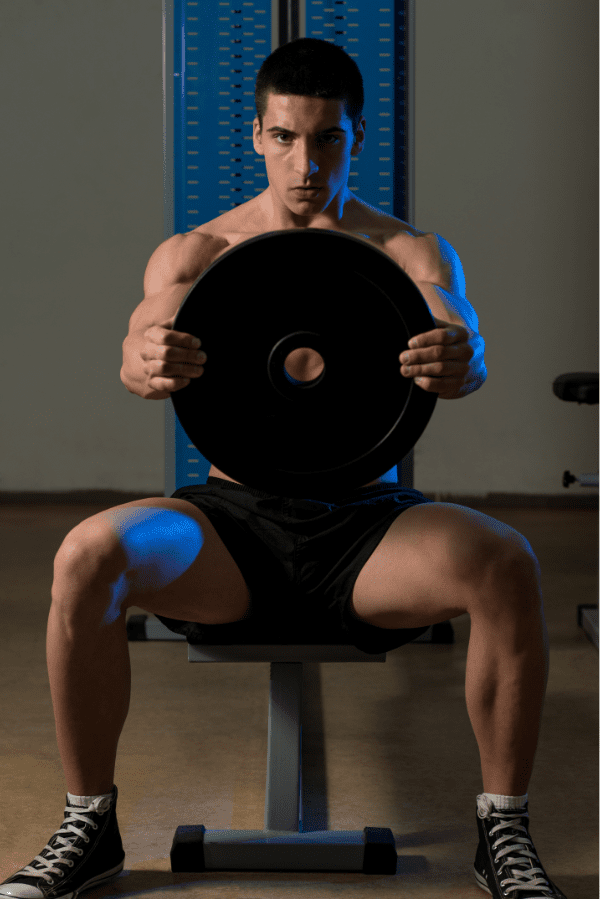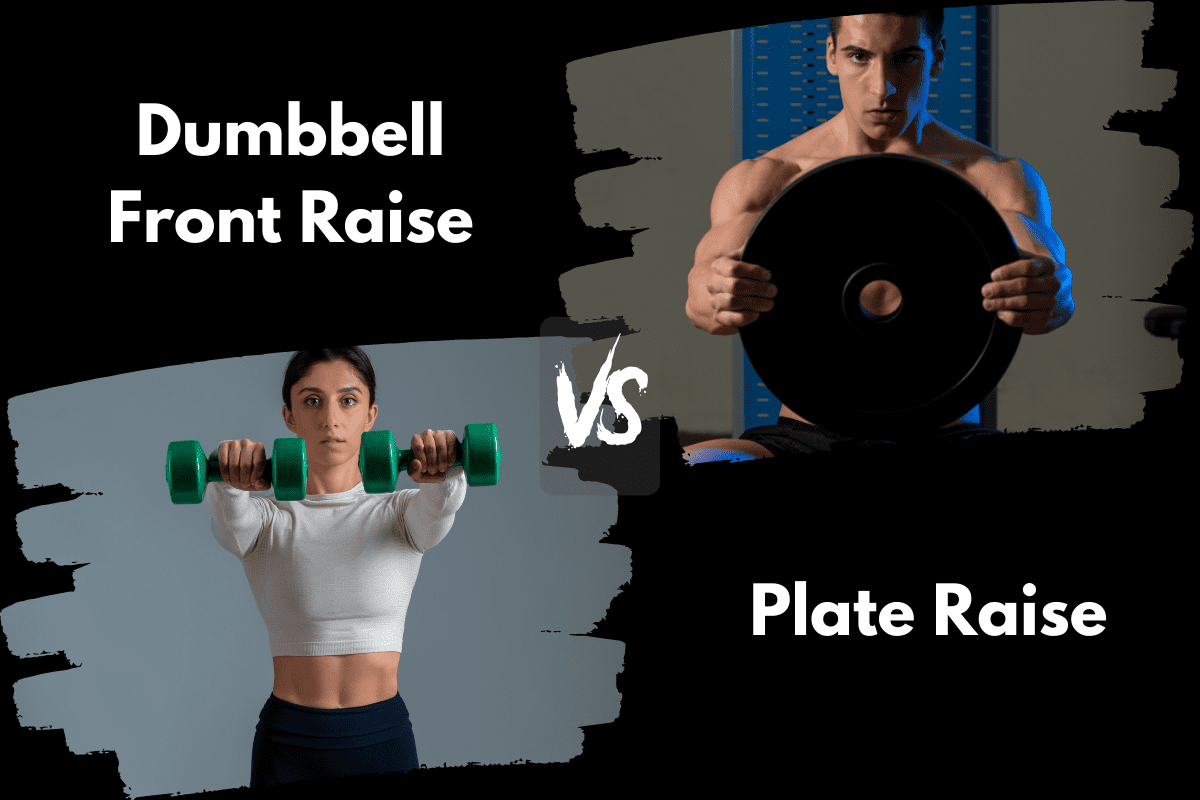Dumbbell Front Raise vs Plate Raise (What’s the Difference?)
When it’s time to hit shoulders, there are dozens of exercises lifters can choose from. Two popular options for shoulders, specifically the anterior delts, are Dumbbell Front Raises and Plate Raises.
Both lifts have very similar movement patterns, but is there an actual difference between them?
Is one exercise better at building strength? Do they work the exact same muscles? Is a Dumbbell Front Raise or a Plate Raise easier for beginners?
In this guide, I’m going to explain exactly how to do each exercise along with its benefits and then compare the two against each other to give you an idea of which exercise you should be doing and when.
First, the Dumbbell Front Raise.
Dumbbell Front Raise

Equipment Needed
- Dumbbells
Instructions
- Hold dumbbells in front of thighs, palms facing in.
- Arms should be straight, elbows very slightly bent.
- Raise dumbbells straight up in front of the body, keeping arms straight, until they reach about eye level.
- Return to the starting position using the same movement path.
- Repeat for the designated number of reps.
Coaching Points
Elbows should not be completely locked out as this puts an unnecessary strain on the joint. Instead, keep a slight bend in the elbow throughout the movement.
Return the dumbbells to the front of the thighs for each rep. Letting them swing down beside the body will create momentum and reduce the emphasis on the shoulders.
Speaking of momentum, do not rock. If you find yourself rocking back and forth to help you lift the weight – the weight is too heavy. Grab lighter dumbbells and keep your torso still during the lift.
RELATED –> 11 Dumbbell Front Raise alternatives to work your Anterior Delts
Benefits of Dumbbell Front Raises
- Front Raises help to build strength in the anterior deltoids, which can help improve overall shoulder stability and reduce the risk of injury.
- Strengthening the anterior deltoids can also improve athletic performance by providing additional stability and power in movements such as overhead lifts, presses and throws.
Plate Raise

Equipment Needed
- Weight Plate
Step-by-Step Instructions
- Hold a weight plate in front of thighs, hands at 3 and 9.
- Arms should be straight, elbows very slightly bent.
- Knees should be slightly bent, core tight.
- Raise plate straight up in front of the body, keeping arms straight, until it reaches about eye level.
- Return to the starting position using the same movement path.
- Repeat for the designated number of reps.
Coaching Points
Plate Raises can be done standing (as described in the instructions) or seated (as shown in the pic above).
Elbows should not be completely locked out as this puts an unnecessary strain on the elbow joint. Instead, keep a slight bend in the elbow throughout the movement.
Return the plate to the front of the thighs each rep, but do not ‘bounce’ the plate off the thighs at the bottom. Keep the weight under control throughout the movement.
Speaking of ‘under control’, do not rock. If you find yourself rocking back and forth to help you lift the weight – the weight is too heavy. Use a lighter plate and keep your torso still during the lift.
Benefits of Plate Raises
- Plate Raises help to build strength in the anterior deltoids, which can help improve overall shoulder stability and reduce the risk of injury.
- Strengthening the anterior deltoids can also improve athletic performance by providing additional stability and power in movements such as overhead lifts, presses and throws.
Dumbbell Front Raise vs Plate Raise: Which is Better?
Now that you’re well-versed in both exercises, let’s compare the two exercises directly.
Which is Better at Developing Strength?
Neither. Both exercises are essentially identical, outside the fact that they use two different pieces of equipment.
Don’t get me wrong, I’m not saying that they don’t help develop strength. Both are excellent options for isolating the anterior delts and building strength and even muscle mass.
What I am saying, is that one raise isn’t necessarily better than the other one. The only real advantage either has is that you can get a bit more specific with how much weight you use with a Dumbbell Front Raise and a Dumbbell Front Raise has each arm work independently which helps to reduce muscular imbalances.
Are The Muscles Worked the Same?
Yes.
Both exercises work the shoulders with a heavy emphasis on the front delts.
Which Should I Be Doing?
Both.
This is the beauty of strength training. There is no need to have to pick between the two exercises. I utilize both Dumbbell Front Raises and Plate Raises in my programming on a consistent basis.
Utilizing both exercises periodically within your strength program helps add variety and keeps your workouts from getting stale.
Final Thoughts
Dumbbell Front Raises and Plate Raises are great choices to hit the anterior delts. Which you use should ultimately just come down to which one your personally prefer doing.
However, there is no reason you can’t be doing both exercises within your strength training. Both are excellent exercises for shoulder development and both can have their place in your training program.

